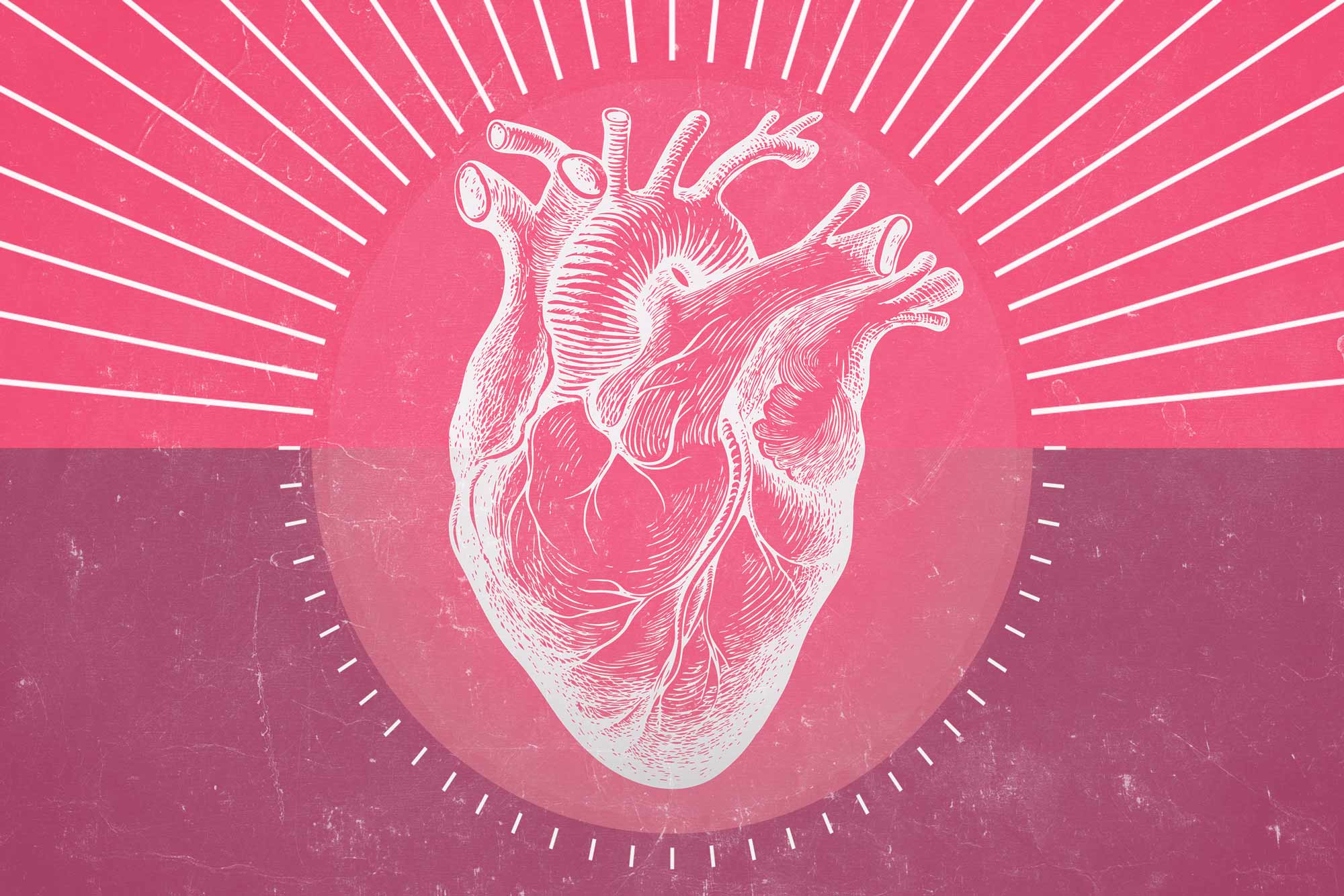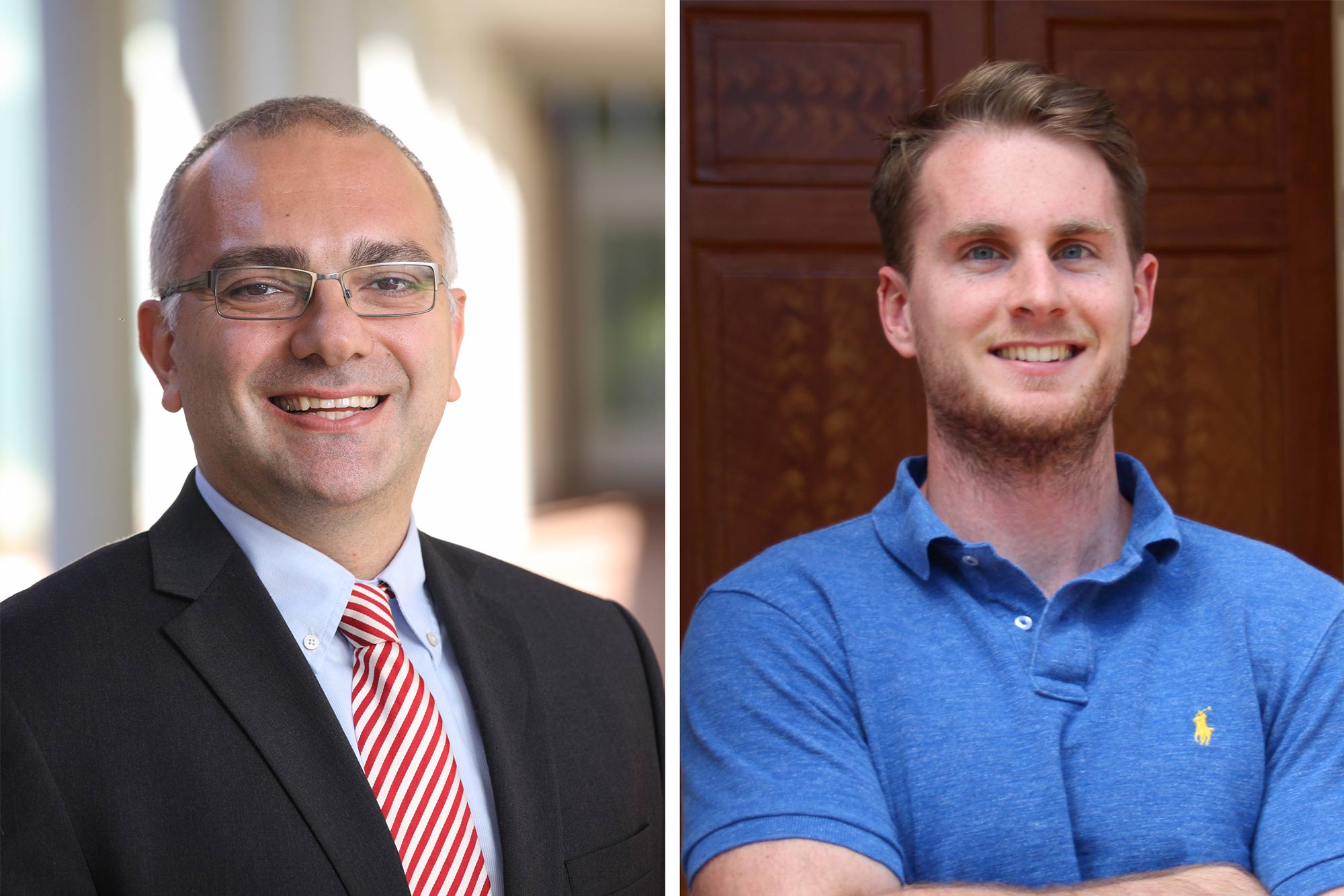CORONARY ARTERY DISEASE DISCOVERY OFFERS ANSWERS ABOUT NATION’S NO. 1 KILLER

UVA researchers say they have found a biological process that contributes to the disease and may be a target for life-saving therapies. (Illustration by Emily Faith Morgan, University Communications)
The discovery provides new targets for scientists looking for better ways to treat and prevent the disease.
Coronary artery disease is the nation’s No. 1 killer and responsible for 25% of deaths in the United States. More than 600,000 Americans die from the disease every year and more than 17 million die from it worldwide.
“Smooth muscle cells that make up the bulk of our blood vessels play important roles in coronary artery disease. They undergo pathological transformations as the disease develops inside our arteries,” said researcher Mete Civelek, of the University of Virginia School of Medicine’s Center for Public Health Genomics and the Department of Biomedical Engineering.
“Our results point to a previously underappreciated role for metabolic pathways during this pathological transformation,” he said.
Civelek and his team wanted to unravel a longstanding mystery about the behavior of smooth muscle cells during plaque formation. These cells, which line blood vessels, protect the body during plaque formation by building stabilizing caps over the plaque that prevent the lesions from breaking loose and causing strokes.
But sometimes smooth muscle cells begin to accelerate the plaque development and spur the progression of the disease, scientists believe.
Civelek’s new discovery helps explain why. Noah Perry, a doctoral student on Civelek’s team, analyzed smooth muscle cells collected from 151 heart transplant donors and used a sophisticated approach to identify genes responsible for the smooth muscle cells’ behavior.
After initially identifying 86 groups of genes, the researchers focused in on 18 groups that could explain the mysterious behavior. Their analysis suggested that the smooth muscle cells’ shift to the dark side of health might stem from problems with how the cells use nitrogen and glycogen. Glycogen is how the body stores the sugar glucose.

Researchers Mete Civelek and Noah Perry analyzed smooth muscle cells from heart transplant donors to identify genes responsible for the cells’ behavior in creating plaques and fueling the disease. (Contributed photos)
The researchers identified a particular sugar, mannose, that may be contributing to the problems, potentially even triggering them. But determining that, the scientists say, will require more research.
“The metabolic shift in the cells as they transition to a disease state can point to points of intervention and therapy,” said Perry, of UVA’s Department of Biomedical Engineering, the lead author of the study.
By better understanding what triggers the smooth muscle cells to become harmful, Civelek says, doctors may be able to develop ways to prevent that from happening. That could open the door to new ways to treat and prevent coronary artery disease.
“Coronary artery disease is still the leading cause of death worldwide,” Civelek said. “Although cholesterol-lowering therapies and blood pressure control have been very effective tools to prevent deaths from heart attacks, we still need more targets to reduce the suffering of patients and their families from this devastating disease.”
The researchers published their findings in the scientific journal Circulation: Genomic and Precision Medicine. The research team consisted of Perry, Diana Albarracin, Redouane Aherrahrou and Civelek. The researchers have no financial interest in the work.
The research was supported by the National Institutes of Health, grants T32 HL007284, F31 HL165772 and R01 HL166428; American Heart Association Postdoctoral Fellowship 18POST33990046; Transformational Project Award 19TPA34910021; and International Network of Excellence Award 22CVD04 from Foundation Leducq.

Comments